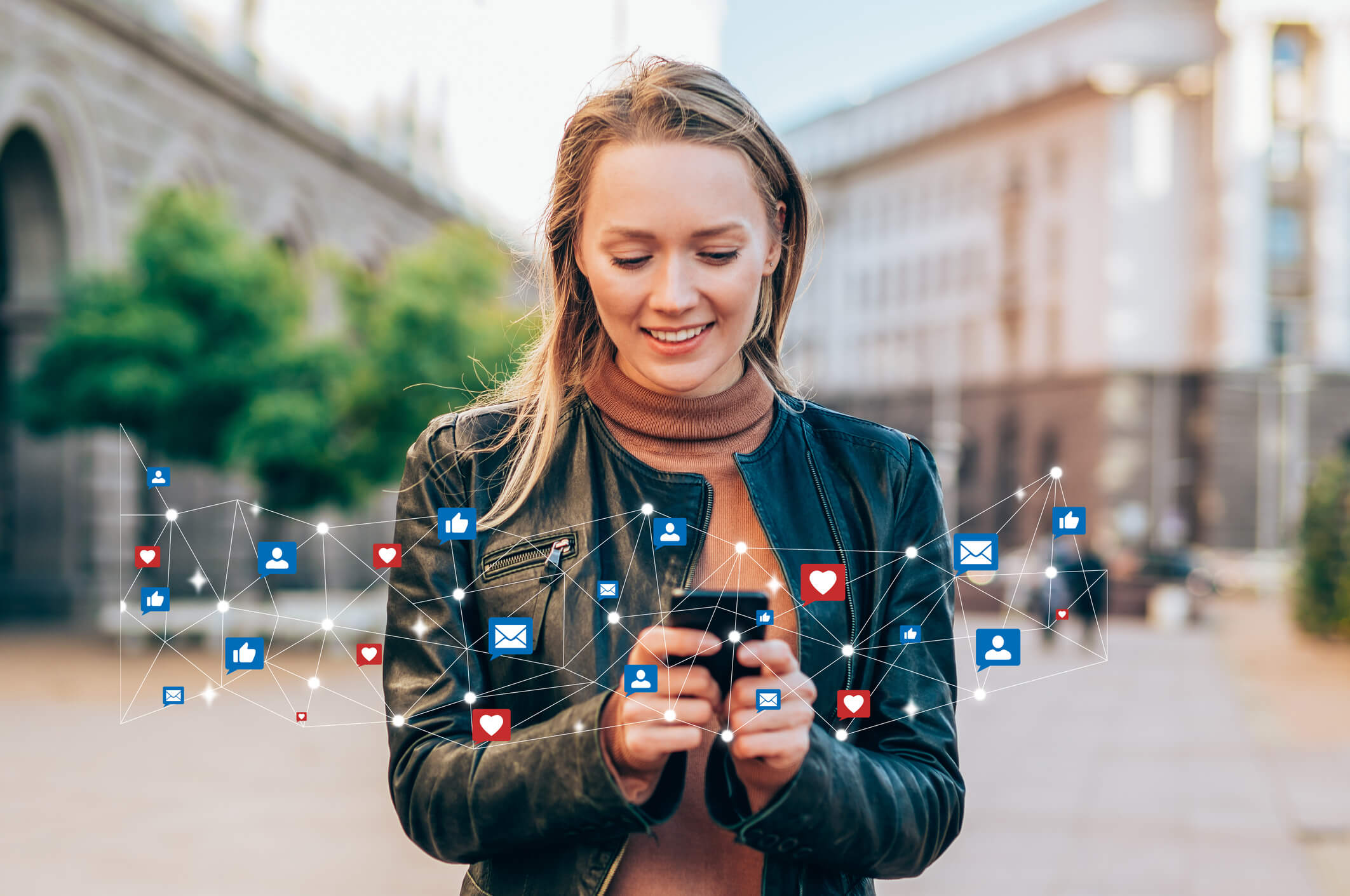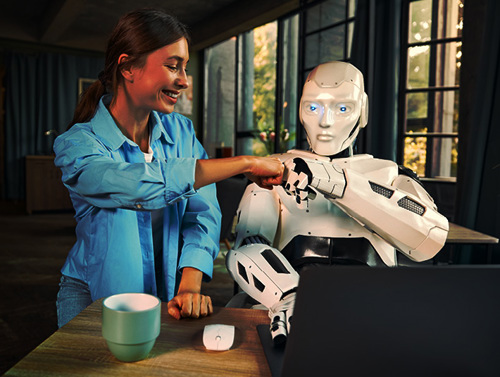
Let’s start with a simple truth: marketing has always been about connecting with people to drive growth and loyalty. And ever since business understood the value of marketing to promote their services and products, marketing has looked to technology to reach customers.
From movie screens to radio to television to digital billboards to computers to mobile phones, marketers and technology have partnered to reach an audience. As the audience grew, technology evolved, and automation became the solution to enhancing an ever-expanding customer base.

In a perfect world, as technology evolves, so should the tools; but what we find is that not all the tools are keeping pace with what today’s customers expect.
If you’ve been relying on traditional marketing automation, it might be time to ask: is this still working for me, or are we simply going through the motions, missing out on real engagement? Here’s a wake-up call: the old playbook is no longer enough. Customers crave personalisation, relevance, and authentic connections, and your marketing tools need to support that.
The evolution of marketing automation: From then to now
Marketing automation started gaining traction in the early 1990s. Back then, it was primarily about automating simple tasks like sending out emails based on predefined schedules, or basic customer segmentation. As CRM systems emerged, they added features like lead scoring and automated workflows, making it easier for businesses to nurture prospects without constant manual effort.

Fast forward to the mid-2000s, and social media platforms like Facebook, Twitter (now X), and LinkedIn disrupted marketing automation once again. Suddenly, brands could engage with customers on a more personal level by creating targeted campaigns based on interests, behaviours, and demographics. Platforms started integrating with marketing automation tools, allowing for more cohesive campaigns that spanned email, social media, and paid media.
Today, we’re in a whole new era; one where software platforms can handle complex, multi-channel customer journeys, powered by AI and data-driven insights. But many of us are still clinging to the limited belief that outdated tools can serve the needs of modern customers or our businesses. And the simple truth is that they can’t.
What traditional automation looks like—and why it falls short
Let’s review what “traditional” marketing automation looks like:
- Linear campaigns: Customer journeys are often rigid, pre-defined “if-then” workflows. They follow a script: send email A, wait, then send email B. But real customer behaviours are unpredictable; people don’t follow scripts, they respond to context, timing, and relevance.
- Limited real-time flexibility: Traditional tools struggle to adapt messaging based on real-time customer actions. If someone visits a product page but doesn’t buy, older systems can’t automatically respond with a personalized offer or message.
- Segmented, not personal: Older marketing strategies and tools often rely on broad segments like age, location and job title, rather than browning and purchasing behaviour. This leads to generic messaging that feels impersonal and disconnected.
- Email-centric communication: While email is still important, it’s often the only channel in play. Social media, SMS and paid ads are usually managed separately, requiring manual uploads or patchwork integration.

- Data siloes: Customer data lives in separate systems (CRM, sales, support), making a unified view a pipe dream. This fragmentation hampers true personalisation and leads to incomplete customer profiles.
- Manual processes & lack of creativity: Data collection, campaign setup, and customer journeys often demand human input at every step, limiting the ability to experiment and innovate. Plus, there’s no AI or predictive analytics to help optimise engagement.
- Limited insights: Success metrics tend to focus on open rates, click-throughs, and form fills. There’s little visibility into the full customer journey or the actual ROI of marketing efforts.
In essence, these limitations lead to fragmented experiences: disconnected touchpoints that don’t feel relevant or timely. Customers expect more - and are already experiencing “more” with brands that have already adopted - they want to be seen, understood, and engaged in ways that reflect their unique needs and behaviours.
The new reality: Connected, adaptive, behaviour-centric marketing

What’s missing from traditional automation is connectivity, not just between systems, but between brands and customers. Customers no longer want to be just another contact, they want to be recognised, appreciated, and engaged in meaningful ways. It’s the difference between “hey, good to see you, can we interest you in….” and “Are we meant to be or what? How amazing that you’re also interested in…. Take a look at…?”
Downloadable PDFs give you contacts, automation 2.0 gives you connections.
Modern platforms like Microsoft Dynamics 365 are your portal to connecting with rhythm, flex, flow and two-way relationships with your customers. They empower you to move beyond static automation, enabling end-to-end customer journeys that are flexible, responsive, and deeply personalised. It’s about understanding not just who your customers are, but what they are looking for.
Plus, with advances in AI and data analytics, you can now predict customer needs, personalise experiences at scale, and optimise engagement in real time. No more guesswork, instead, you get insights that help you craft smarter, more impactful campaigns.
Partnering for success: The power of connection
This transformation isn’t just about replacing your existing systems; it's about enhancing them. Partnering with experts who understand both the technology and the human side of marketing is crucial.
Fusion5, a proud member of the Microsoft Dynamics Inner Circle and an award-winning Microsoft partner, specialises in guiding businesses through this evolution. We’ll help you unlock the full potential of your marketing efforts, from strategic planning to seamless implementation.
Remember, it’s not just about tools, it’s about partnerships; it’s about working together to create marketing experiences that feel authentic, relevant, and engaging.
Fusion5 is here to help you navigate this journey. Let’s unlock the power of connection and create marketing that truly resonates.
Our goal is to help you build genuine connections, foster customer loyalty, and unlock new opportunities for growth.
Curious if your marketing stack is ready for the future?
Take a look at our Marketing Evolution Checklist to assess your current capabilities.
| Feature | Traditional Marketing Automation | Dynamics 365 Customer Insights |
| Campaign logic | Linear, rule-based workflows | Adaptive, AI driven journeys |
| Channels | Primarily email | Omnichannel (email, SMS, LinkedIn, events, web, social, push) |
| Customer Data | Siloed across tools | Unified Customer Data Platform (CDP) integration |
| Personalization | Basic (e.g., name, company) | Real-time behaviour- and preference-based content |
| Segmentation | Static lists | Dynamic, real-time segments |
| Integration with Sales/Service | Limited | Deep native integration with Dynamics 365 CRM, Sales, Customer Service |
| AI & Automation | Minimal or rule-based | AI powered recommendations, lead scoring, content suggestions |
| Customer Journey Visibility | Fragmented | End-to-end visibility, real time insights, journey tracking |
| Event & Webinar Management | Add-ons or third-party tools | Built-in event management and webinar integration |
| Scalability | Complex and manual as you grow | Scales with business growth and data complexity |
| Reporting & Analytics | Basic (open/click rates) | Advanced dashboard, ROI tracking, attribution modelling |




